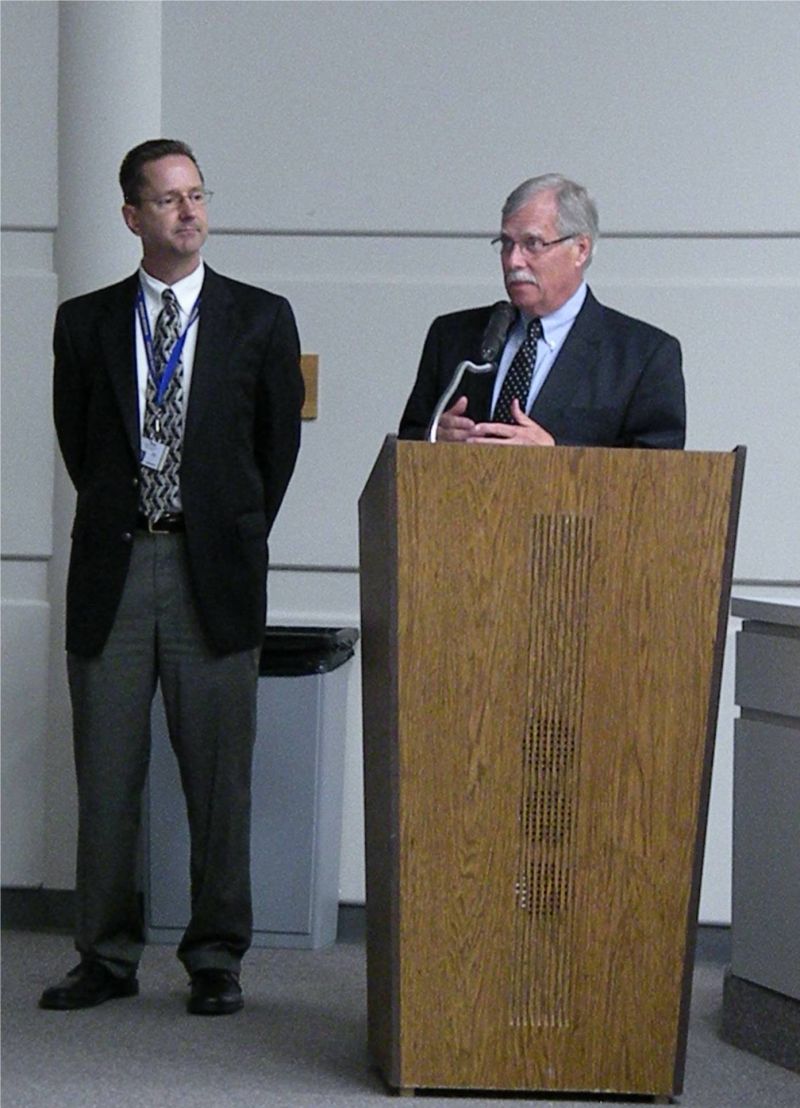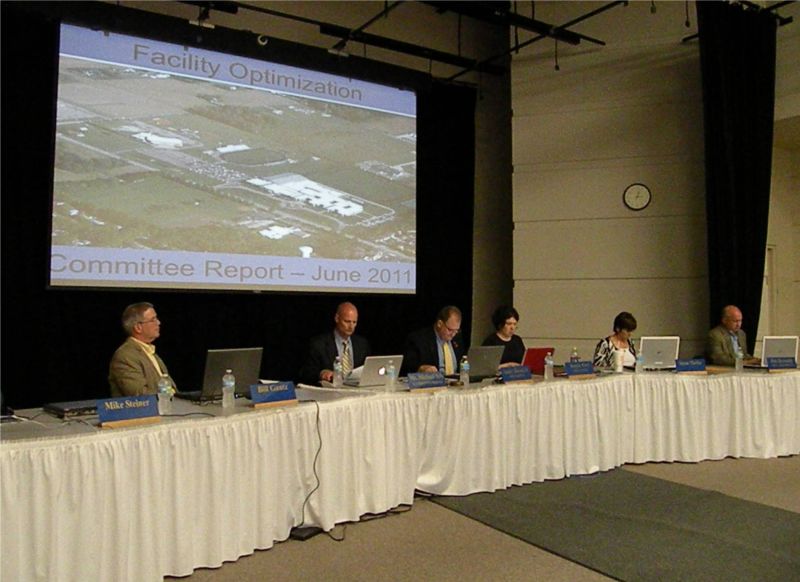072511 Study of school facilities complete
Summary: With a study of the condition of the physical buildings that make up the Wooster City School District complete, the district is ready to take the next step in its facilities utilization project.
Facing the loss of millions of dollars in state funding, the Wooster City School District has taken the next step in seeing what type of savings can be realized by more efficiently using its existing facilities.
When a study conducted by Director of Business and Community Affairs Dave Kocevar in April showed that declining enrollment coupled with excess capacity at Cornerstone Elementary School, Edgewood Middle School and Wooster High School might present cost saving opportunities for the district, the board tasked Kocevar to assemble a Facilities Optimization Committee made up of community members with expertise in the building trades to assess the condition of the district?s buildings.
?The goals of the committee were three pronged ? confirm the need for optimizing our space, rank our facilities for future space planning and develop facility scenarios based on the observations of their study,? said Kocevar.
After spending two months reviewing thousands of pages of documents relating to the condition of the district?s six current elementary schools, Layton Elementary School and Edgewood and visiting each building to assess their condition firsthand the committee presented its findings to at the board?s June meeting.
?There does appear to be an opportunity to maximize some of the operational efficiencies of the district through consolidating or reducing facilities,? said committee chair and former Wooster Superintendent Doyle Davidson.
Kocevar noted that after considering reams of data on everything from building condition to utilities costs, the committee force ranked each of the eight buildings from one to eight with Edgewood coming out at the top of the rankings followed in order by Kean, Melrose, Parkview, Cornerstone, Wayne, Lincoln Way and Layton.
Davidson noted that as the committee members ?worked thru the process we began to think about ?what are some of the things you could do? and one of the things that emerged fairly strongly from all of us is that some consideration might be given to moving another grade level into the high school and then to strategize how you can more completely utilize Edgewood and Cornerstone thereby taking advantage of all of the space that?s there.?
According to Kocevar the high school has the capacity to handle a total of five district grade levels; Edgewood could accommodate three. With the exception of Cornerstone, which has the capacity to handle two grade levels, the elementary school buildings could accommodate one district grade level.
That information provided the committee with the opportunity to begin to formulate a number of possible scenarios for more fully utilizing the district?s buildings.
?Each of the (elementary) buildings could hold up to one district grade level or grades grouped together based on the rankings and educational planning,? said Kocevar adding ?in other words, based on the number of grade levels you can get in those top three buildings, you could probably have a pre-K to two grouping of buildings, pre-K to three, etc.?
With a bricks and mortar analysis of the district?s buildings complete, ?the next step is to put the educational planning element into play,? said Kocevar.
According to Superintendent Michael Tefs one of the key questions the district will need to answer for each facility is ?what program are we trying to deliver at a particular level and will it fit into a particular space.?
Tefs noted that district officials will spend the summer distributing the committee?s findings to district administrators and analyzing possible scenarios to present to community focus groups in September. Presentations to local community groups and PTO?s and community surveys are also on taps for this fall. District officials plan to complete the analysis of the data and present a final report to the board by December.
For more information on the district?s facilities utilization activities visit the district?s home page at www.woostercityschools.org and click on the Facilities Optimization link.
Sidebar:
What are the costs savings for shuttering an elementary school building?
As part of their analysis the Wooster City School District Facilities Optimization Committee determined the annual potential operational savings for closing one of the district?s existing elementary schools.
According to Director of Business and Community Affairs Dave Kocevar in coming up with a figure for each building the committee considered a wide variety of factors including the cost of gas, electric, water, sewer, trash, janitorial supplies, basic maintenance, building insurance and basic administrative and support staff.
The figures below take in to account minimal utilities and maintenance expenses associated with taking the building out of day to day use but do not include savings the district may experience in personnel expenses, the income the district might receive by selling or leasing the building or the transportation costs to the district for bussing students to different locations.
The schools appear in the order in which they were ranked by the Facilities Optimization Committee.
Kean - $129,242
Melrose - $121,815
Parkview - $134,161
Wayne - $129,543
Lincoln Way - $148,989












